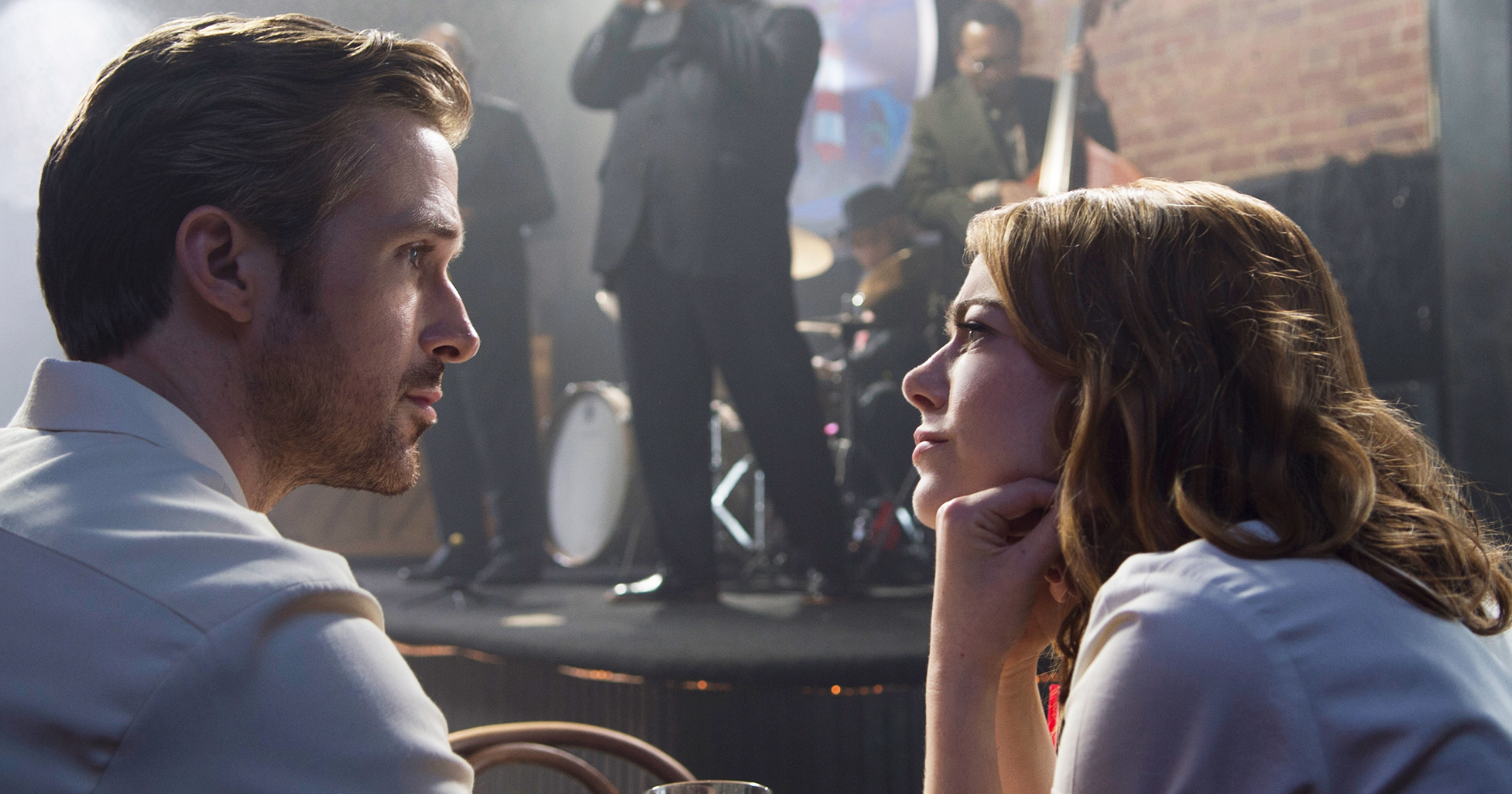
The 73rd Venice Film Festival has begun, and the signs are everywhere: The Lido, the island on which the festival takes place, is crawling with journalists and critics bedecked with badges. There are plenty of locals out and about too, ready to enjoy the pleasurable, relaxed glamour of this festival, which is much more intimate and far less crazy than Cannes. And even though festival director Alberto Barbera opted to cancel the opening-night dinner and party this year, to express solidarity with the victims of the August 26 earthquake in central Italy, the mood here in Venice is still buoyant. The party was called off, but the opening-night red carpet went on as scheduled. And it’s kind of hard to be in a bad mood when Emma Stone shows up, as she did tonight, in a greenish-silver metallic gown with car-wash fringe.
Stone is here to promote the festival’s kickoff film, Damien Chazelle’s glorious, open-hearted musical La La Land, in which she and Ryan Gosling play singing, dancing lovers in contemporary Los Angeles—they’re a modern answer to Fred Astaire and Cyd Charisse dancing in the dark, only theirs is a world of literal, if not always figurative, sunshine. La La Land is Chazelle’s third feature as director, and it’s an ambitious and risky piece of work. For one thing, almost no one makes musicals anymore. And the world is full of people who announce loudly and often how much they hate them—how ridiculous they find it when performers spontaneously burst into song: “No one ever does that in real life!”
Exactly. These people and their droning logic have been with us since the beginning of time. La La Land may win some of them over, but either way, it’s destined to become a line in the sand: The people who end up loving it will do so fiercely.
I suppose it’s possible, if you really work at it, to resist Stone and Gosling. In La La Land, Stone’s Mia is an aspiring actress and playwright stuck working the coffee shop on the Warner Bros. lot. She goes on many, many auditions, fruitlessly. She lives with a jillion roommates, or so it seems, and in one of the film’s early numbers they gather ’round her like a flutter of butterflies to persuade her, in her state of exhaustion and discouragement, to go to a party. It’s one of those slick Hollywood things that no one ever has fun at—certainly not in the movies. But this terrible party does, in the end, lead Mia to a bar, where the pianist in residence, a jazz nut forced to play dumb Christmas songs, is about to defy the wishes of his boss (the cantankerously wonderful J.K. Simmons) and play a song he wrote. That song will change Mia’s life—though as with most life-changing moments, the effects aren’t immediate.
The jazz nut is Gosling’s Sebastian, and he, like Mia, is sick of having dreams that won’t come true. He wants to open a jazz club, and you can imagine how easy that is in this day and age. And though he’s charming and adorable in his neatly tailored suits and two-toned shoes, he’s also a little angry at the world, and he pushes Mia away before, at long last, drawing her near.
When their romance finally kicks in, it’s irresistible, and the songs that loop through their life together are too, particularly the loping, hypnotic ballad “City of Stars.” The musical numbers—set to songs by Justin Hurwitz and the songwriting team of Benj Pasek and Justin Paul—are beautifully staged and choreographed, and the mix of styles is playful: There’s a little Jerome Robbins here, a little Jacques Demy there. And Chazelle is fearless about shaping moments that some might find corny: In one of the most astonishing dance sequences, Mia and Sebastian, inspired by a viewing of Rebel Without a Cause, sneak into the Griffith Observatory after hours and literally drift off the ground and into a field of stars.
Gosling and Stone are so light on their feet that you almost believe this could really happen. Stone is practically from another planet anyway: With those Venusian, almond-shaped eyes, she looks a little like those drawings people make when they believe they’ve been abducted by aliens. These two have been wonderful together before, in Crazy, Stupid Love (2011) and Gangster Squad (2013), but in La La Land, as a duo they’re close to perfection. This movie is purely for them, and they revel in it. You can see it in the way they move and in their singing, too: Stone’s voice is clear and light, like a sliver of morning sun. Gosling’s is soft and dusky, like a moonbeam. They meet in the middle, but not without their share of heartache. La La Land is both a love letter to a confounding and magical city and an ode to the idea of the might-have-been romance, in all its piercing sweetness. It’s a movie with the potential to make lovers of us all. All we have to do is fall into its arms.
More Must-Reads from TIME
- Cybersecurity Experts Are Sounding the Alarm on DOGE
- Meet the 2025 Women of the Year
- The Harsh Truth About Disability Inclusion
- Why Do More Young Adults Have Cancer?
- Colman Domingo Leads With Radical Love
- How to Get Better at Doing Things Alone
- Michelle Zauner Stares Down the Darkness
Contact us at letters@time.com